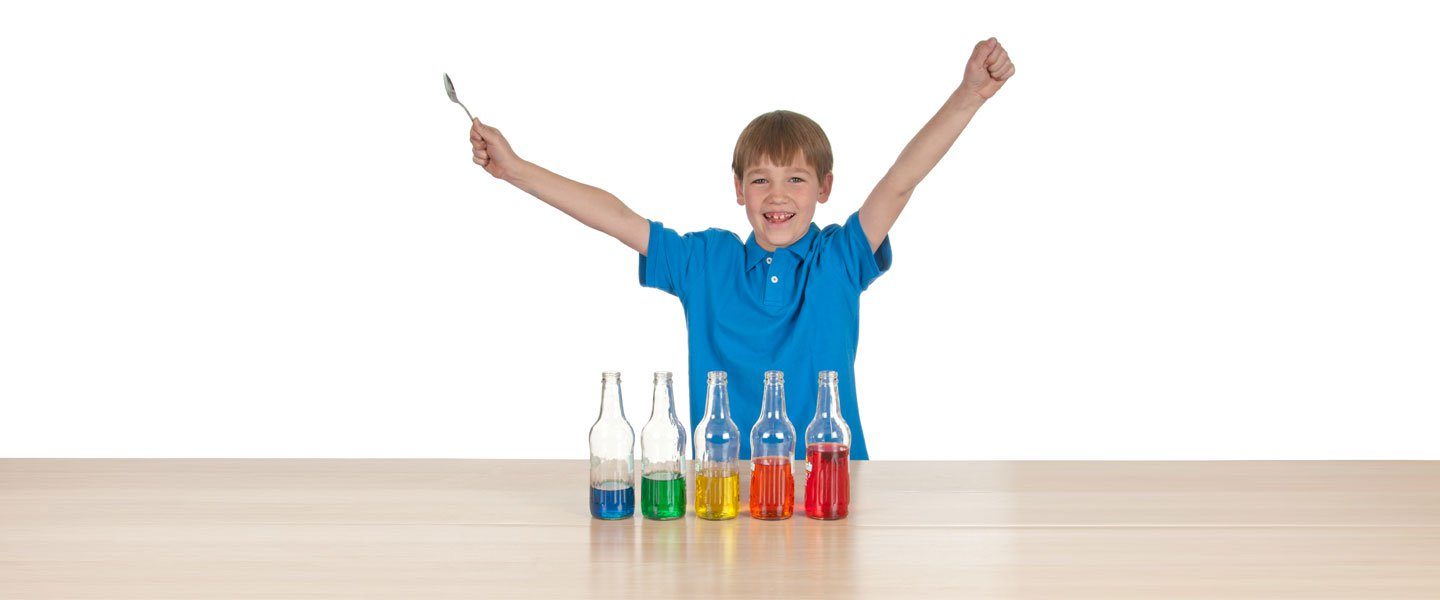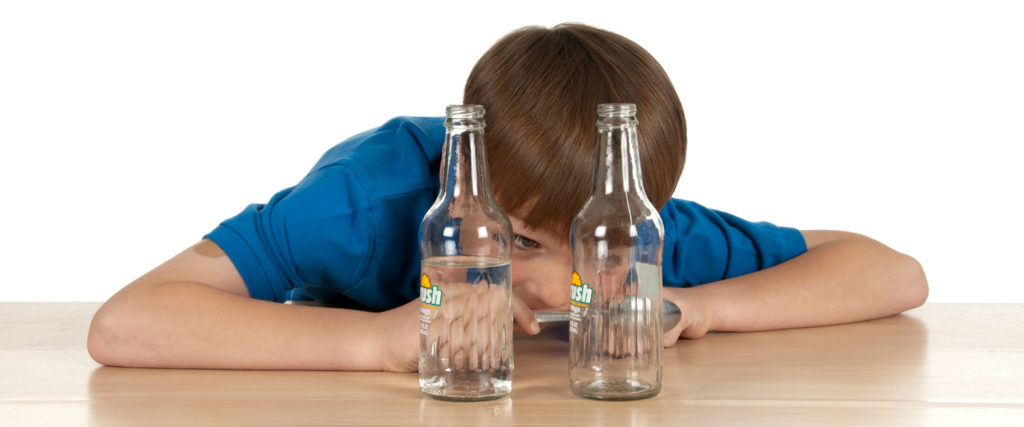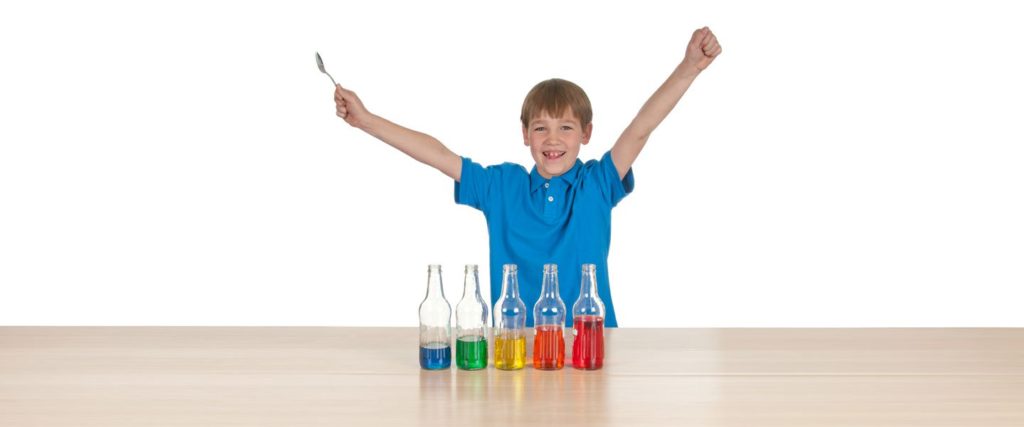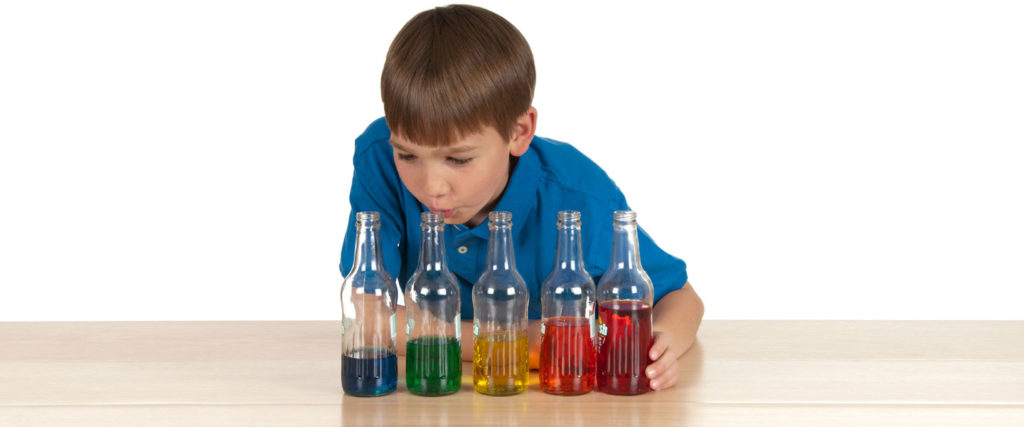Halloween Sounds - Screaming Cup
This is the perfect sound effect to carry door-to-door on your trick or treat adventure.

A popular Las Vegas musical act uses tubes, bottles, trash cans, and other common items to make some very cool and distinctive sounds. This just proves that banging on pots and pans can lead to a very successful music career. Try your hand at making your own instruments using just a few household items.

Fill one bottle full with water and leave a second bottle empty. Use the back of the spoon to gently clink both bottles. How are the sounds different?

Fill a third bottle half full with water. Clink all three bottles. The sound of the half- full bottle is about in the middle of the other two sounds.

Blow air across the tops of all three bottles. What do you notice?
The science of sound is all about vibrations. When you hit the bottle with the spoon, the glass vibrates, and it’s these vibrations that ultimately make the sound. You discovered that tapping an empty bottle produced a higher-pitched sound than tapping a bottle full of water did. Adding water to the bottle dampens the vibrations created by striking the glass with a spoon. The less water in the bottle, the faster the glass vibrates and the higher the pitch. The more water you add to the bottle, the slower the glass vibrates, creating a lower pitch.
The same bottle that makes a low-pitched sound when you tap it with a spoon makes a high-pitched sound when you blow across the top. The same bottle produces opposite sounds! When you blow into the bottle, you are making the air vibrate, not the glass. An empty bottle produces a lower pitch because there’s lots of air in the bottle to vibrate. Adding water to the bottle decreases the amount of air space, which means there is less air to vibrate. With less air, the vibrations happen more quickly and produce a higher pitch.
By varying the amounts of water in each bottle, it’s possible to create a musical scale. That’s why this activity calls for eight bottles, one for each note of the musical scale. Try it with clinking the bottles and with blowing over the tops of the bottles. What differences do you notice? If you want to really put on a show, use food coloring to color the water in each bottle differently. Of course, the food coloring does nothing to affect the sound, but it does make it look like you really know what you’re doing! The ultimate goal is to play a song . . . and then to get people to drop a few bucks into your hat. See, this book is already making you money.
Invite some friends over and present them with this challenge: in 60 seconds, arrange the bottles in such a way that when they are clinked with the spoon, they play a familiar song. Try “Jingle Bells,” “Mary Had a Little Lamb,” “Twinkle Twinkle Little Star,” or “Beethoven’s Fifth Symphony”—the song is up to you. The first person to arrange the bottles correctly and play the song wins.